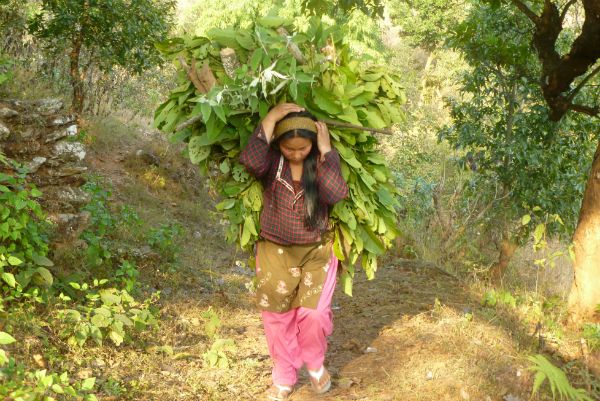
As the world’s most important ecosystem, forests play an important role in all this. PEFC forest certification ensures that forests are managed and used sustainably.
In my work, I’ve long been involved in sustainable forest management and forest certification. But I had little practical experience until I became a family forest owner a few years ago. My forest is a typical northern forest with various natural habitats, from an old spruce stand to recently planted seedlings, and from coniferous forest to bogland, as well as natural bodies of water – we’re in Finland, after all. My forest has much that is interesting and beautiful, but no actual conservation sites. I occasionally participate in forest management work, and I pick mushrooms in my forest in the autumn. Naturally, my forest is PEFC-certified.
PEFC stands for the Programme for the Endorsement of Forest Certification. Its purpose is to ensure ecologically, socially and economically sustainable forest management and use. Globally, more than 60% of all certified forest hectares are certified in accordance with the PEFC. The PEFC requires profitable and socially sustainable forestry to maintain forests’ biodiversity and cultural and recreational value.
The criteria, or forest certification requirements, are developed in cooperation with various stakeholders, such as forest owners, environmental organisations, forest industry operators, representatives of indigenous peoples, or others who can contribute with their respective expertise. Certificate holders’ operations are reviewed annually by a third party. Certification and the related PEFC logo ensure that the raw material for baking paper, for example, comes from a sustainably managed forest and that its origin is known.

PEFC forest certification sets stricter sustainability criteria for forest management than legislation, which determines the national minimum requirements. In Finland, the first Forest Act came into effect as early as 1886. Today, for example, the Forest Act still requires that the growth of a new generation of trees is ensured by planting new seedlings.
The strengths of the PEFC include its consideration of local conditions. Forests and operating methods vary greatly between northern commercial forests, which resemble natural forests, and tree plantations in warm regions in the south, for example. However, the biodiversity maintenance goals are consistent. In the Nordic countries, during regeneration felling, groups of retention trees are left in the forest. In due time, these trees will die, topple and decay, becoming homes for insects and other organisms. In southern tree plantations, natural value is fostered by leaving green corridors between cultivation areas, for example.
The PEFC focuses strongly on the forest sector’s social aspects. In the Nordic countries, these criteria concern labour rights, the monitoring of the chain of forest contractors and advice for forest owners. In Finland, the focus is also on increasing forest knowledge among young people – the professionals of the future. There are also regions where it’s important to consider the basic livelihood and living conditions of people who depend on forests.
Change often happens slowly in forests. However, the effects of the PEFC on forests, the forest sector and society as a whole can be assessed over the 20 years of its existence. Progress has been made. In Finland, certification has had a positive effect on the well-being and biodiversity of forests. Certification has also improved knowledge and skills, changed attitudes and facilitated the creation of established operating methods. An increase in the amount of decaying wood through retention trees has had a particularly strong effect on biodiversity. Appreciation of the ecological aspects of forests has increased among private forest owners, and many want to leave valuable sites in a natural state or manage them to increase their natural value.

Let’s return to my forest. Forest management work is being carried out there this year. A summer employee is clearing seedling stands, which means removing deciduous thickets from between spruce seedlings. On another site, a local forest service contractor is thinning a 40-year-old pine stand. This allows space for trees to grow and become sturdier. The pulpwood from the thinning is delivered to Metsä Group’s bioproduct mill in Äänekoski. Groups of retention trees are marked during thinning and will be left to grow during future felling. In line with the PEFC criteria, a protection zone is left by the lake to prevent nutrient runoffs into the water and to protect the landscape. The 100-year-old peatland forest will remain untouched to help conserve the bogland habitat. As a forest owner, I believe it’s very important to ensure a balance between natural value, recreational use and forest management.
Riikka Joukio
PEFC Council, Board member
Riikka has served as a member of the international PEFC Board of Directors since 2014. As a Board member, her strengths include providing industrial and northern perspectives. Riikka is in charge of Greaseproof Papers business at Metsä Tissue in Finland, and has held various managerial and other positions at Metsä Group. The sustainability of the forest industry has always been close to her heart. Riikka’s hobbies include exercise, handicrafts and gardening – in addition to occasional forest management work.
Twitter: @RiikkaJoukio
LinkedIn: https://www.linkedin.com/in/riikka-joukio-891227
source: https://pefc.org/news/pefc-global-forests-providing-a-sustainable-future-for-twenty-years












